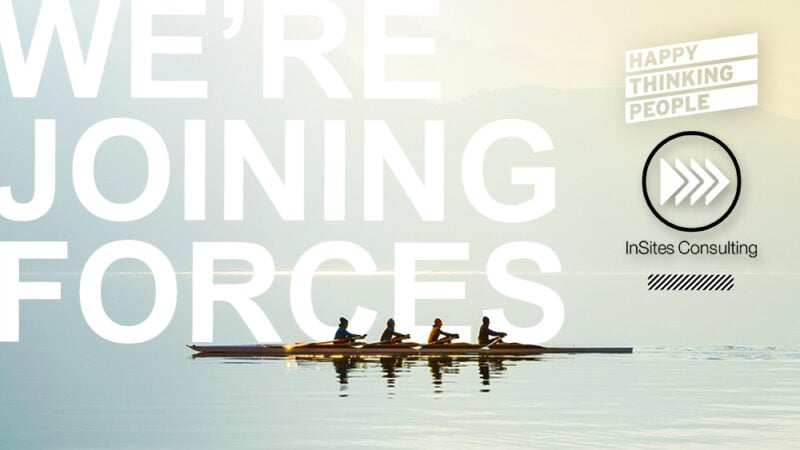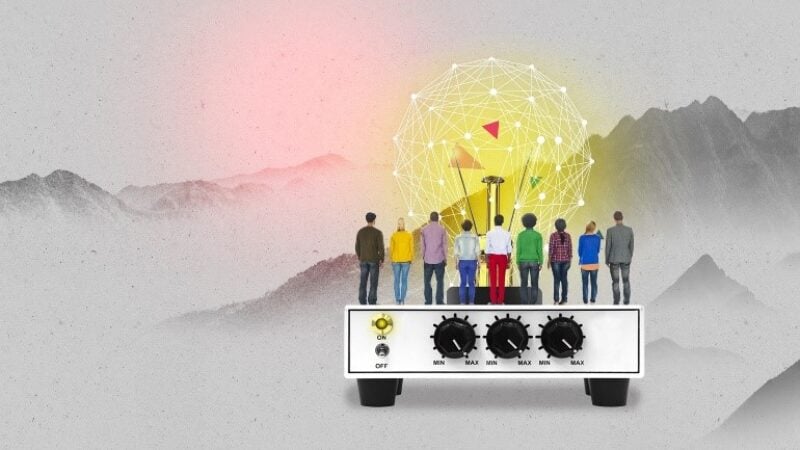Silicon Valley Change League Tour – Day 2
InSites Consulting was recently elected as one of the winners of the BNP Paribas Fortis Change League competition, putting companies in the spotlight that have been (radically) redefining themselves in light of a changing environment. Being among the winners, Tim Duhamel and I have the unique opportunity of spending a week in Silicon Valley with a group of 18 other Belgian entrepreneurs and CEOs, tapping into the ground zero of innovative ideas, disruptive technologies and entrepreneurship. Every day, we will write down our learnings, thoughts and ideas based on what we have experienced.
FEASTLY
Last night, chef Geoffrey prepared an amazing dinner for all Change League participants. Next to being involved with Ichido (foraged Japanese seafood with California roots), he is also cooking for Feastly. This social platform allows erstwhile chefs to invite guests to their homes or to visit yours. Noah Karesh, founder of Feastly, was clear about his intentions: become the largest restaurant of the world. If the quality of what we experienced yesterday is an indicator of their growth potential, they are looking at a bright future!
But back to business, here’s what we experienced/learned on day 2 of the Sillicon Valley Change League tour.
SINGULARITY UNIVERSITY
Aaron Frank kicked off our second day sharing the unique vision and mission of Singularity University. Singularity University was founded to solve some of the world’s grand challenges. Every summer, they bring in 80 students to address an issue that affects at least a billion people in the next decade.
Aaron started by introducing the transcension hypothesis arguing that, in the course of condensing and exponentially strengthening our computational environments (we now have computers the size of a rice grain), we are becoming a virtual species and transforming ourselves from an analog to a digitized state. For example, we can now manipulate DNA in much of the same way as we can edit a Word document. But this also holds to how brands are evolving. When GM was confronted with a technical problem, they had to recall 30 million cars, leading to a $3 billion drop in the market stock value. When one of the early Tesla cars caught fire, they simply updated the software solving the problem, not having to recall any of the Tesla cars. Tesla is not manufacturing cars, but computers instead.
The departure point of Singularity (a term borrowed from physics) University is that the rate of change around us is exponential, not linear. We have difficulties grasping this because our brains are hard wired in a linear way. While it is easy to estimate the distance of 30 linear steps, 30 exponential steps is the equivalent of walking 26 times around our planet (1,07 billion steps). Take a look at the surge of data: while in 2003 humanity only created 5 exabytes of data, we are now living through the equivalent of a nuclear explosion of data, generating 1200 exabytes in 2013. In 2049, we are expected to be able to tap into the power of all of the world’s human brains at a cost of just $1,000. To put this in perspective of today’s computational power: for $1,000 we are able to tap into the power of the brain of just a field mouse. Ray Kurzwell, an academic at MIT and co-founder of Singularity University, was the one coming up with the idea of the law of accelerating returns. The reason for exponential change is simple: we use the latest technology to create the next technology. In the early part of any exponential growth curve, human beings are typically disappointed. But when it comes to the next part of the growth curve, humans find themselves in a state of amazement and chaos, underestimating the power of exponential progress.
Aaron ended his inspiring talk in a humble way: “We really have no idea where all of this will take us. We simply don’t know.”
Our key take-away
Aaron’s core message is that we are moving analog to virtual species. Think about how your company can turn into software or technology, much in the same way as was described in the Tesla example. Don’t get disappointed too soon, we typically overestimate the start of the curve and underestimate what happens after the tipping point!
500 STARTUPS
Up next was 500 Startups, accelerating early stage ideas and investing in as many new startups as possible. Since its start in July 2010 it has made 1,500+ investments, now being the most active seed investor in Silicon Valley and striving to become the most dominant seed investor globally. Their philosophy is that “more is better” given the average 1-2% success rate of any new venture. 500 startups has 3 unicorns in its portfolio (Credit Kama, Twilio, Grabtaxi), meaning they have a $1 billion market valuation. Their 500 Accelerator Program helps companies to develop as fast as possible through a dedicated growth marketing team, own conferences / events (e.g. Geeks on a Plane), community platforms, an investor education program in collaboration with Stanford University, and demo days in front of potential investors. Interesting fact: mentors coaching new startups do not charge for their work: the philosophy in Silicon Valley is to pay it forward.
Our key take-away
In Silicon Valley, failure is a badge of honor. What can you take from that idea to integrate in your business? Think of your own employees as individual startups: are you putting enough internal seeds into what you are trying to achieve?
ZSPACE
Time for action and experimentation at Zspace, a company focusing on virtual and augmented reality for learning purposes. For example, students can learn how the heart functions through 3D heart visualization. Dave Chavez (Chief Technology Officer) says you “have to see it to believe it”, which is why all of us had the opportunity to test and try how this type of technology works. He was right: the experience was simply amazing. While it has been really hard and time-consuming to create it, involving proprietary software / hardware and involving huge development costs, Dave thinks it will take less than 2 years before this technology can be made available to a wider audience. While education is a very big market for them, it is only the beginning. The difference with Oculus Rift is the social dimension: it is a much better application for a school environment as people are still able to see each other and jointly participate in the learning process. Dave doesn’t expect the Oculus Rift technology to be adopted by moms for that specific reason :-). There is also the physical dimension, where the comfort of using this technology is higher compared to the Oculus Rift. Dave has been excited all his life about making things: “If you get a group of smart people together, you can get to amazing things.”
The point of departure for Zspace was to take the power of VR and cave technology to our desks. “We have come to accept that flat screens are flat and the rest of the world is 3D. We should not accept this.” Dave says. They arrived at the solution by going back in time hundreds of thousands of years in evolution. Every form of complex life has 2 eyes, not 3 not 1. And the spacing of our human eyes is optimal for depth perception. A lesson Dave learned in the development process: don’t add unnecessary complexity to what you are trying to develop. This is why they decided to fix a wire to the pen that is used to move and manipulate visual information: it was not essential to the user experience and would slow down the development process. His answer to what is next: “This is a big deal and I have a feeling that this is just the beginning, like the introduction of the Apple Mac back in the days.”
Our key take-away
Dave did not accept the idea that flat should stay flat. Don’t create your own limitations, think beyond them! Zspace opens opportunities to move collaboration to the next level by allowing 3D co-creation, offering a more realistic and reliable framework to get to better products and services.
RAINFOREST STRATEGIES
After just picking up the message on our bus that Mark Zuckerberg decided to give away 99% of his Facebook shares worth $45 billion to charity during his lifetime, there was no better timing for Ann Badillo (entrepreneur in residence) to start talking about building innovative ecosystems for our world. In her talk, she wants us to learn from other living systems that are similarly complex to today’s high-paced changing environments. Using rainforests as a metaphor, she compares the bay area to an ecosystem similar to the one of a rainforest, driving serendipity through interconnectedness. Culture is the software, it is the invisible operating system that is at the basis of exponential organizations and high performing teams. Trust, connectivity and diversity are the key cultural elements to develop. The rules of the rainforest (weeds) typical for innovation are very different from the ones of the plantation (crops) typical for production: break the rules and dream, open doors and listen, trust and be trusted, seek fairness not advantage, experiment and iterate together, fail and persist, and pay it forward. She applies the Rainforest scorecard to assess the extent to which companies are maximizing their innovation potential. Ask yourself the following 7 critical and sequential innovation questions to accelerate growth: who are you? what do you want? do you have the will? is it possible? how specifically? how do you build it? how do you use it?
Our key take-away
At InSites Consulting, we are on a similar journey to embrace the ideas embedded in the rainforest metaphor with our people at the core of the experiences we deliver to customers. Think about defining your social contract: the guiding principles to work together as colleagues, ultimately creating your culture.
SCANADU
Our final stop is at Scanadu, where they believe that we are the last generation that knows so little about our own health. Amanda Mork (Communications & Marketing) shares with us the story of how Scanadu originated. The company was founded by 2 technology entrepreneurs 4 years ago after experiencing a personal family health issue. Their strategic focus is on medical applications (no wearables), designed for consumers, and mobile first. They lift on the key shift happening from a seller market to a buyer market as a result of increasing decentralization, consumerization, personalization, and shortage of GP’s in the US (estimated 100,000 GP’s by 2025). Scanadu allows patients to make a simple, binary diagnosis themselves using intelligent and easy-to-use technology, often technology they already have available such as their iPhone. The unique value Scanadu adds in the medical space is the fact that (1) health is treated as a curve, not a single point in time and (2) health is connected, using a community approach to benchmark medical data across members. Our kids will deal with regaining control over their own health again: “We have been disassociated from our own health for too long. Our goal is to maximize access to all of the data that are generated by our bodies.”
Our key take-away
Another strong example of the emancipation of consumers, with Scanadu redefining the future of the medical space. Think about whether or not your business is built around snapshots or whether you can drive new value as a result of creating streams or rivers of information, unlocking insights you have possibly not gathered before and driving new opportunities from them.
Missed our adventures of day 1 of the Sillicon Valley Change League tour? Just visit them here:




